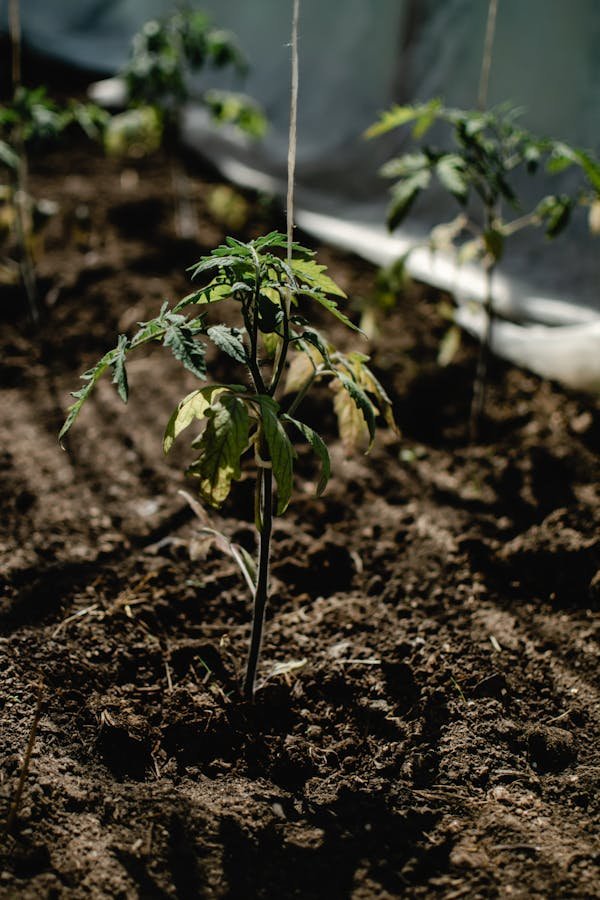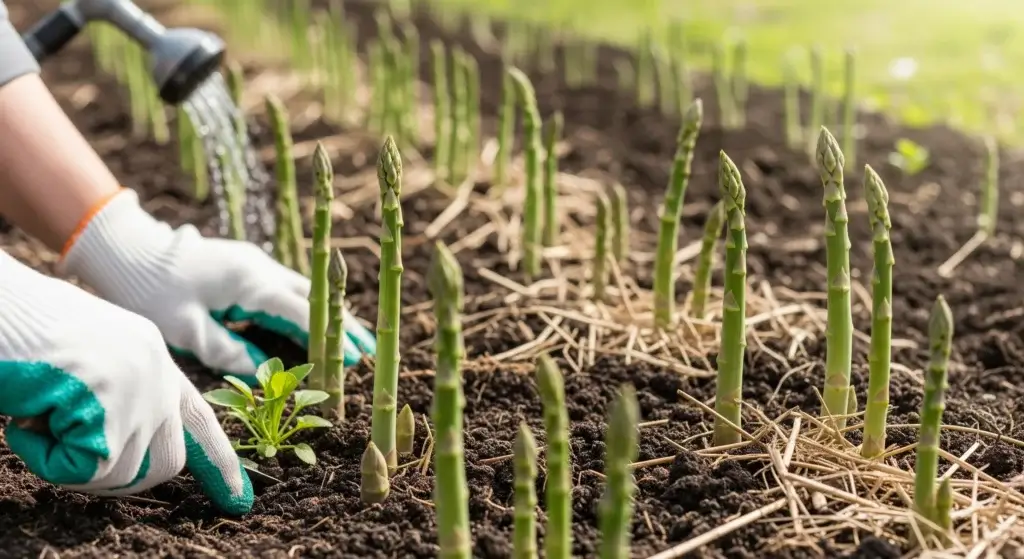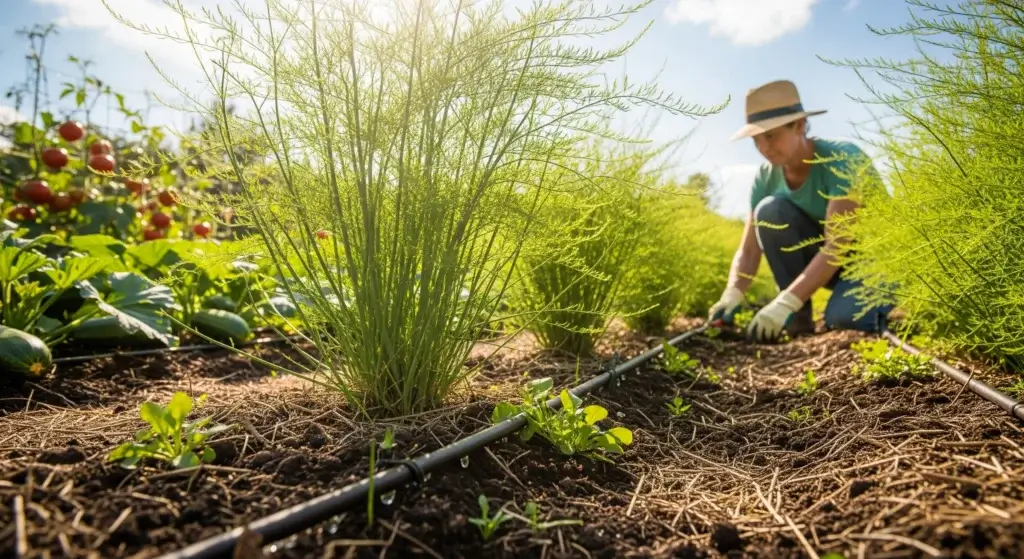
Tomatoes are a popular and rewarding plant to grow, but they can be susceptible to various leaf problems.
In this article, we will explore the different factors that can lead to issues with tomato leaves, including nutrient deficiencies, diseases, pests, environmental factors, and physiological disorders.
We will also discuss the symptoms of tomato leaf problems, treatment options, organic remedies, conventional treatments, and tips to prevent these issues.
Our goal is to provide you with a comprehensive understanding of tomato leaf problems and how to effectively manage them.
Identifying the Culprit
When it comes to tomato leaf problems, there are several potential culprits to consider.
These include nutrient deficiencies, diseases such as leaf spot diseases, pests, environmental factors like temperature and humidity, and physiological disorders.
Identifying the specific cause of the leaf problem is crucial in determining the most effective course of action to address it.
- Read also: Mastering the Art of Drip Irrigation for Tomatoes
- Read also: A Guide to Natural Pesticides for Tomatoes
Nutrient deficiencies
Nutrient deficiencies can manifest as various symptoms on tomato leaves, such as yellowing, browning, or unusual patterns.
Common nutrient deficiencies in tomatoes include those of nitrogen, potassium, and magnesium.
Ensuring that your tomato plants receive the proper balance of essential nutrients is key to preventing and addressing nutrient-related leaf problems.
Diseases
Tomatoes can be affected by a range of diseases that impact their leaves, including leaf spot diseases like Septoria leaf spot, early blight, and bacterial spot.
These diseases can cause characteristic spots and blemishes on the leaves, leading to reduced plant health and fruit production.
Proper disease management practices are essential for minimizing the impact of these issues on tomato plants.
Pests
Several pests can cause damage to tomato leaves, such as aphids, armyworms, cutworms, and whiteflies.
These pests can chew on leaves, suck sap from plants, and transmit diseases, leading to leaf damage and reduced plant vigor.
Implementing pest control measures is crucial for managing pest-related leaf problems.
Environmental factors
Environmental factors, including temperature, humidity, and soil moisture, can influence the health of tomato leaves.
Fluctuations in these factors can lead to issues such as leaf curling, yellowing, and physiological disorders.
Creating optimal growing conditions for tomatoes is important for mitigating the impact of environmental factors on leaf health.
Physiological disorders
Physiological disorders, such as leaf roll, sunscald, and edema, can also affect tomato leaves.
These disorders are not caused by pathogens or pests but are the result of non-infectious factors, including environmental stress and nutrient imbalances.
Understanding and addressing these disorders is essential for maintaining leaf health.

What are the Symptoms of Tomato Leaf Problems?
By recognizing the symptoms early on, you can diagnose the issue and take action to save your precious plants.
Here’s a quick guide to some common problems and their telltale signs:
Discoloration
- Yellowing: Generally indicates nutrient deficiencies (nitrogen, potassium) or environmental stress (heat, sun damage). Can also be a sign of disease.
- Browning: Often caused by fungal diseases like Early Blight or Late Blight. Look for concentric circles and dark, water-soaked spots.
- Purpling: This can be a sign of phosphorus deficiency, cold stress, or certain herbicide exposure.
- Red or orange mottling: May indicate Tomato Spotted Wilt Virus, characterized by mosaic patterns and stunted growth.
Shape and texture
- Cupping or curling: Can be caused by pests like aphids, nutrient deficiencies (potassium), or herbicide damage.
- Stunted or distorted growth: Often points towards viruses or herbicide damage.
- Wilting: This can be caused by underwatering, overwatering, root problems, or diseases.
- Holes or tears: Evidence of insect or animal damage.
Spots and splotches
- Small, black spots: Early signs of bacterial diseases like Bacterial Spot.
- Yellow halos around dark spots: Symptoms of Early Blight, a fungal disease.
- Fuzzy white spots: Possible powdery mildew infection, especially in humid conditions.
- Greasy yellow or brown spots: Signs of leaf miner activity, where larvae tunnel within the leaf.

How do you Treat Tomato Leaf Problems?
Treating tomato leaf problems depends on the specific issue at hand. Here’s a breakdown of strategies for common scenarios:
Organic solutions
- Nutrient deficiencies: Amend the soil with appropriate organic fertilizer or compost tea based on the missing nutrient.
- Fungal diseases: Encourage airflow and try natural fungicides like copper fungicide or baking soda spray. Remove infected leaves and debris.
- Pests: Use insecticidal soap, neem oil, or diatomaceous earth to deter or eliminate insects. Attract beneficial predators like ladybugs.
Conventional treatments (use responsibly)
- Serious fungal diseases: Apply labeled fungicides according to instructions, focusing on preventative measures in future seasons.
- Heavy pest infestations: Utilize targeted insecticides, adhere to safety precautions and follow label instructions strictly.
Tips to Prevent Tomato Leaf Disease
Preventing tomato leaf diseases is an important aspect of maintaining plant health and productivity.
Some key tips to prevent tomato leaf diseases include:
- Selecting disease-resistant tomato varieties
- Providing adequate air circulation around plants
- Watering at the base of the plant to keep leaves dry
- Removing and disposing of infected plant material
- Avoiding working with plants when they are wet
- Rotating tomato crops to reduce disease pressure
- Monitoring plants regularly for signs of disease
By implementing these preventive measures, you can help create an environment that is less conducive to the development and spread of tomato leaf diseases.
- Read also: Tomato Plant Watering Schedule
- Read also: A Guide to Building Your Own Tomato Plant Watering System

Conclusion
Understanding and addressing tomato leaf problems is essential for promoting the health and productivity of tomato plants.
By being able to identify the various factors that can lead to leaf issues, recognizing their symptoms, and knowing how to effectively treat and prevent them, you can be better equipped to support the well-being of your tomato plants.
Whether through organic remedies, conventional treatments, or proactive disease management practices, taking a proactive approach to tomato leaf health can contribute to a successful and rewarding gardening experience.
FAQs
Yellowing leaves can have many causes, but nutrient deficiencies, pests, and diseases are common culprits. Check this post for specific symptoms and solutions.
Always prioritize organic solutions when possible. This post offers natural remedies and suggests conventional options only for serious cases.
This post highlights key preventative measures like proper watering, nutrient balance, and choosing resistant varieties.
Find additional tips in this post on providing optimal growing conditions, and spacing, and promoting good airflow to avoid future problems.



